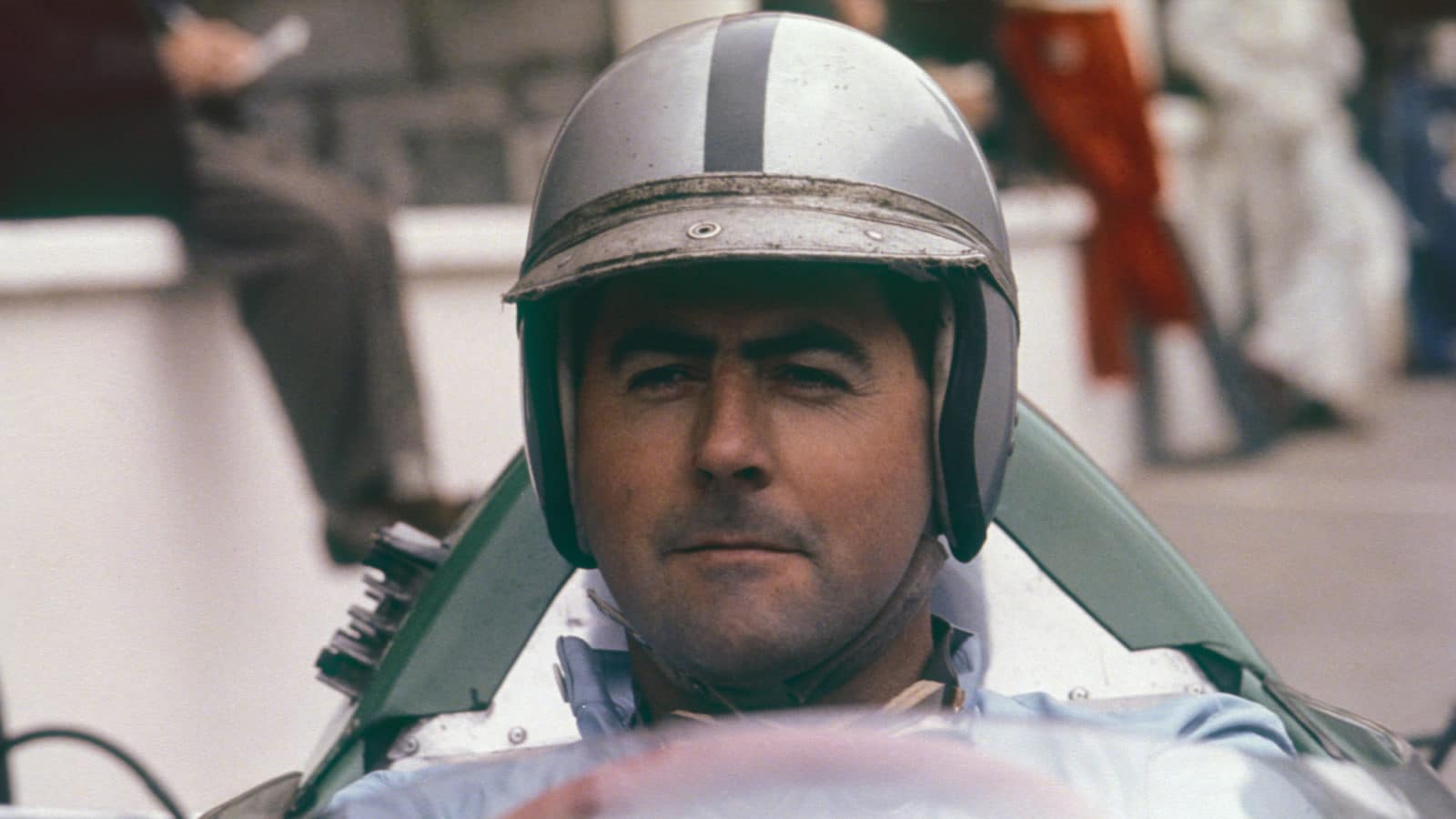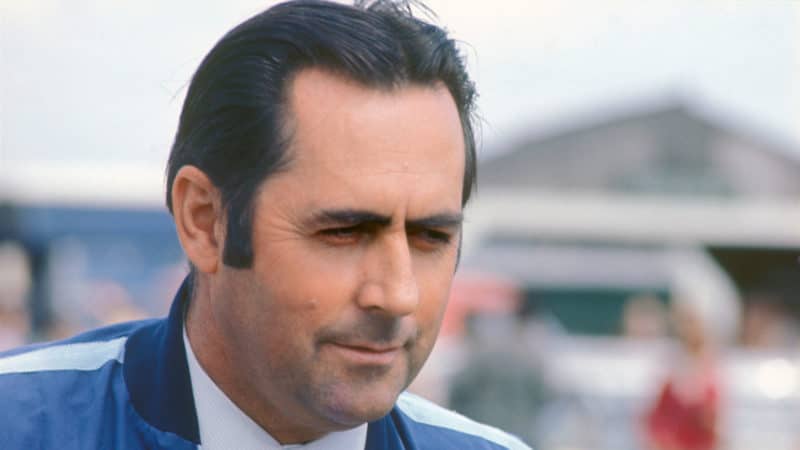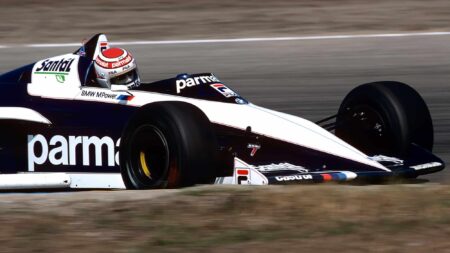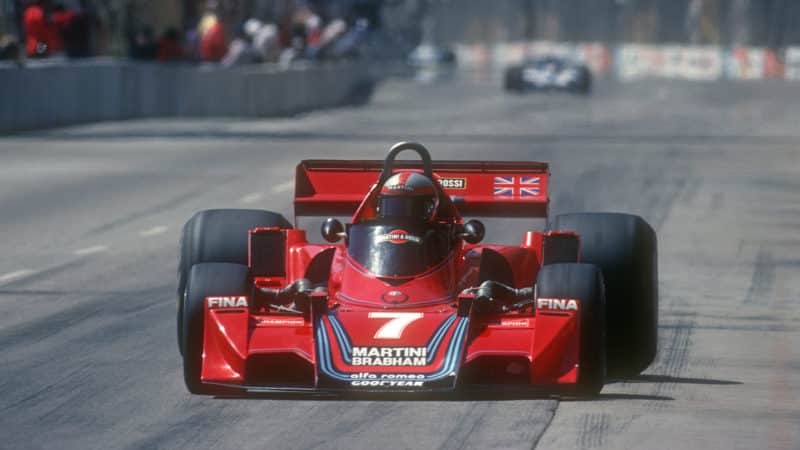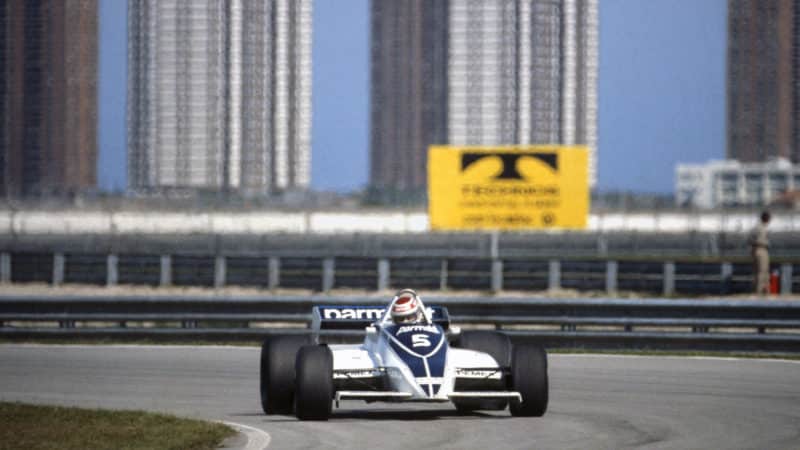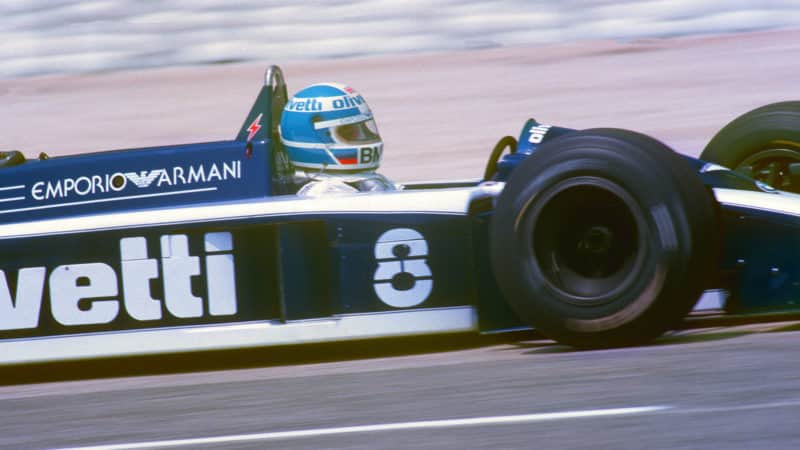Jack and Ron Tauranac pulled a master stroke. Reasoning that the rival teams of Cooper-Maserati and Ferrari V12s, not to mention the horrendous BRM H16, would be either too heavy or too unreliable, they decided instead to go for a lightweight production based engine for the new Brabham BT19.
This was the Australian Repco V8 based round the General Motors Oldsmobile F85 cylinder block. This engine had been abandoned by GM after initially being developed as part of a linerless aluminium engine programme for a projected 3.5-litre Buick “compact.” Not quite at a stroke, Repco transformed this from a commercial disaster to a motor racing dream.
The Repco V8 was light, serviceable and sufficiently powerful to get the job done. It might have only had a claimed 315bhp at a leisurely 7250rpm, but that was enough to see off the vastly overrated and ultimately disappointing Ferrari 312s which were hotly tipped as pre-season favourites. Brabham won four races that year to clinch the world championship, then team-mate Denny Hulme repeated the title winning performance in 1967 using first the BT20 and latterly the newer BT24. But by then, of course, the Repco V8 – and everything else, come to that – had effectively been eclipsed by the sensational 400bhp Ford Cosworth DFV V8 which made its winning debut in Clark’s Lotus at the Dutch Grand Prix.
Unfortunately, the 1968 season saw Brabham stumble dramatically. Having hired the young and dynamic Jochen Rindt as his number one driver, Jack thought he could reasonably look forward to a third consecutive successful season. Ron Tauranac penned the semi-monocoque BT26 – in fact a spaceframe using smaller gauge tubing but stressed with alloy sheeting – but the vital stumble came from Repco’s new type 860 V8. Brabham shared the Australian engine maker’s belief that they could produce a four-cam V8 to match the new Cosworth DFV. It didn’t turn out that way. F1 engine specialist John Judd who subsequently went on to build his own Formula 1 engines and those for Yamaha sets the season in perspective.
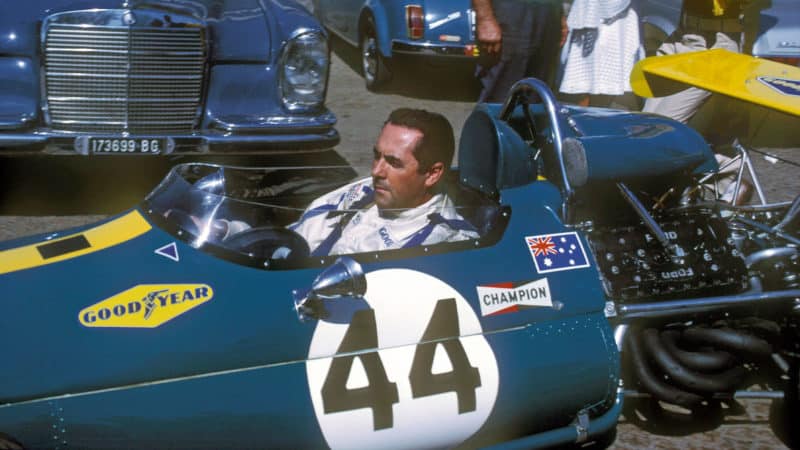
Brabham found himself racing on in 1970 after planning to retire after Rindt moved to Lotus
Grand Prix Photo
“I spent much of the 1967 season down in Australia working on sorting out that four-cam engine,” he recalled. “The power output was alright, but when it came to actually racing it we had a large number of quality control problems. But, it has to be said that, at the end of the day Cosworth’s DFV was far ahead in terms of design. There were so many things they did for the first time, and they did them right.”
Rindt only finished twice in the world championship points, including a strong third in the pouring rain at the Nürburgring. He wanted to stay with Brabham, but Colin Chapman was prepared to bid the earth for him to move to over to Lotus. After much consideration, Jochen finally made the move.
For ’69 Jack bowed to the inevitable and switched to DFV power, signing the fiery young Belgian star Jacky Ickx to drive alongside him. Ickx went on to score a spectacular victory over Jackie Stewart’s Matra in the German GP at the Nürburgring and would also triumph in the Canadian GP at Mosport Park. But at the end of that single season he returned to Ferrari, from whence he came.
At the end of 1969 Rindt’s manager, one Bernie Ecclestone, found himself stuck in the middle of a dilemma. Jochen was thinking hard about returning to Brabham, but again Chapman played his financial trump card with the help of some very big bucks from tyre supplier Firestone. So Jack – staring his 44th birthday in the face – found himself virtually committed to driving for one more season.
